You’ve heard of touchless car washes, but do you really know much about them? Before signing up for an Ultra-Mega-Wash, you should know if it’s better for your car or not.
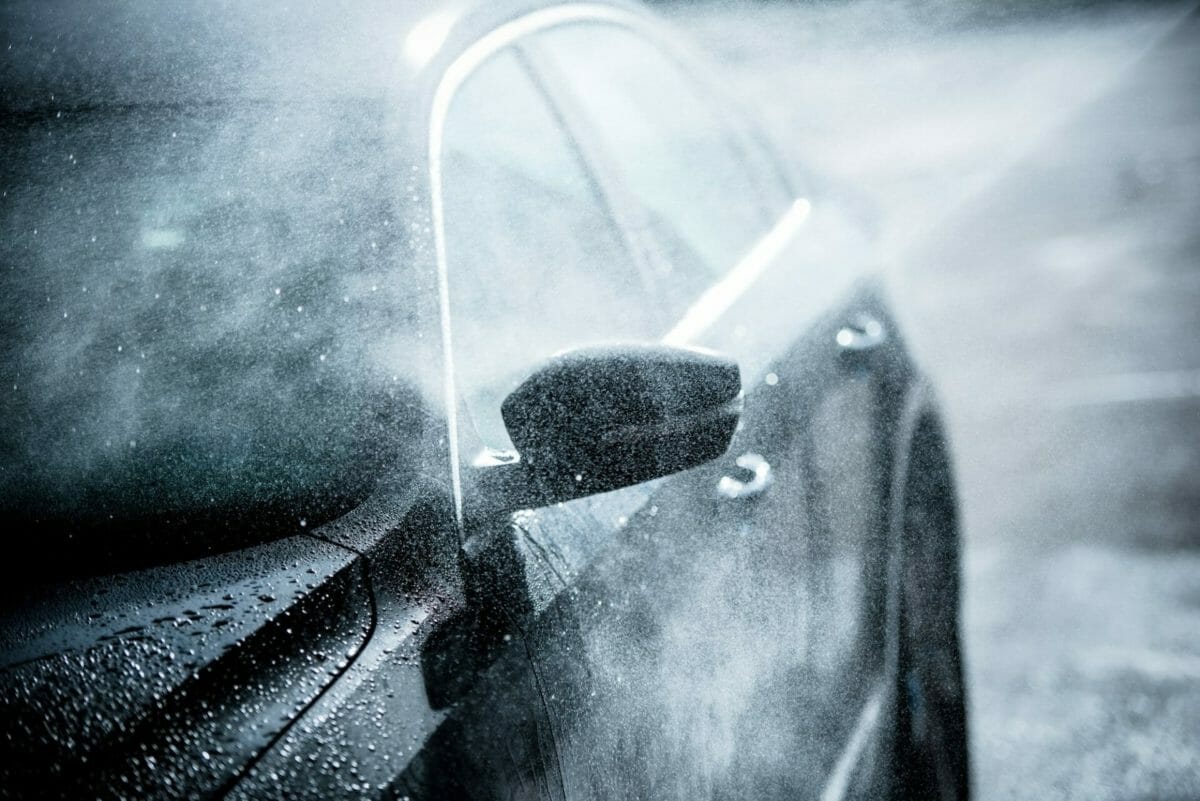
Can you even remember the last time you washed your car by hand? For many, it’s been a while, thanks to the convenience — and rampant availability — of touchless car washes (commonly known as laser washes). Yet, have you ever actually stopped to ask, are touchless car washes better for your car?
Instead of brushes or sponges, touchless car washes use detergents, chemicals, and high-pressure water jets to lift dirt from the paint and blast it away. While not necessarily “better” for your vehicle, touchless — or frictionless — is an effective (and safe) car cleaning method when used correctly.
Here we’ll explore touchless car washes in detail, covering all the pros and cons, and comparing them to alternatives like tunnel, self-serve, and hand washes. Finally, we’ll share a few tips to ensure your next laser wash goes smoothly.
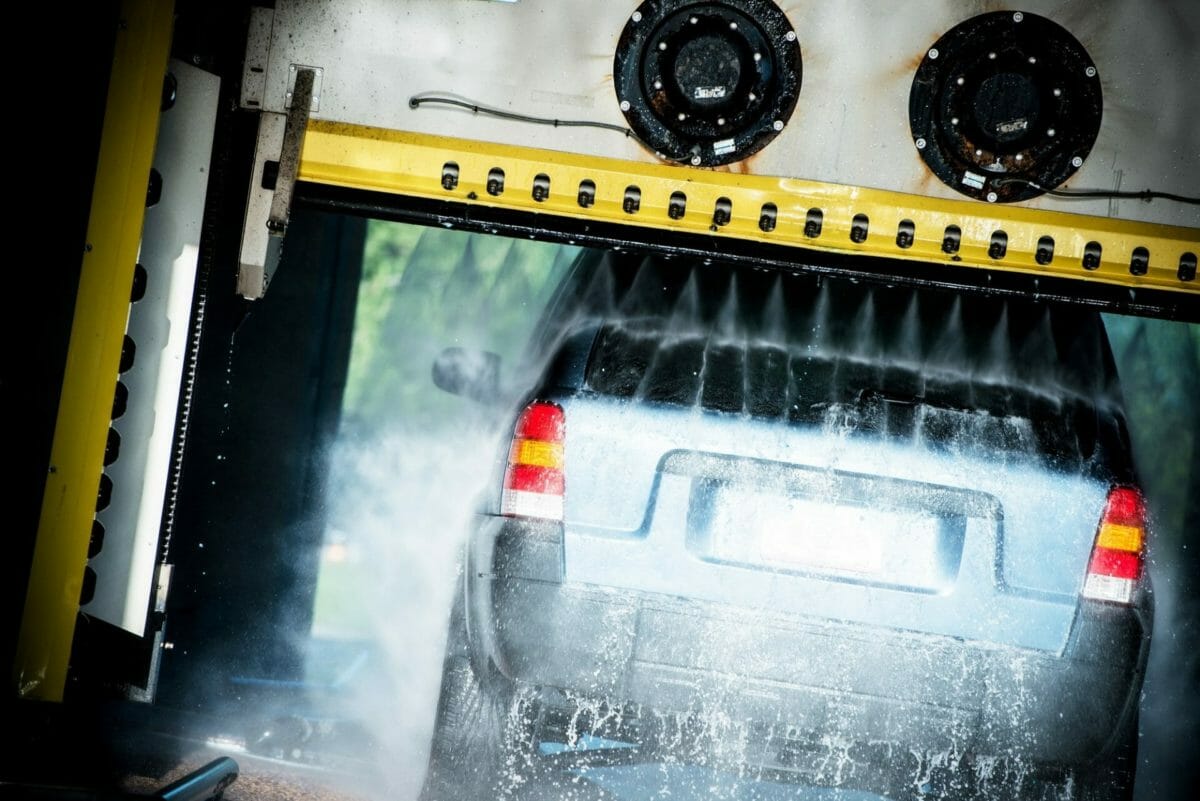
What is a Touchless Car Wash?
With a touchless wash, you select a wash cycle, drive into the bay, place the car in Park, and stay put until the cleaning cycle is over. As its name suggests, at no point will anything other than water and “soap” be in contact with your vehicle (unless you opt for a coat of wax, undercarriage cleaning, etc.).
The system starts by wetting the car using low-pressure nozzles. Then, a foaming, liquid detergent is applied to help penetrate, soften, and break down all manner of grime. Some of these include dirt, bug residue, tree sap, bird droppings, and more.
Most touchless car washes also offer upgraded cycle options. The most common include powerful pre-cleaner foams, neutralizing agents, tire cleaners, undercarriage cleaners, or a coat of wax.
Finally, high-pressure water jets clear the remaining soap, and high-pressure blowers dry the vehicle as you slowly drive out. In cases where there are no blowers, car wash attendants will manually wipe down the car.
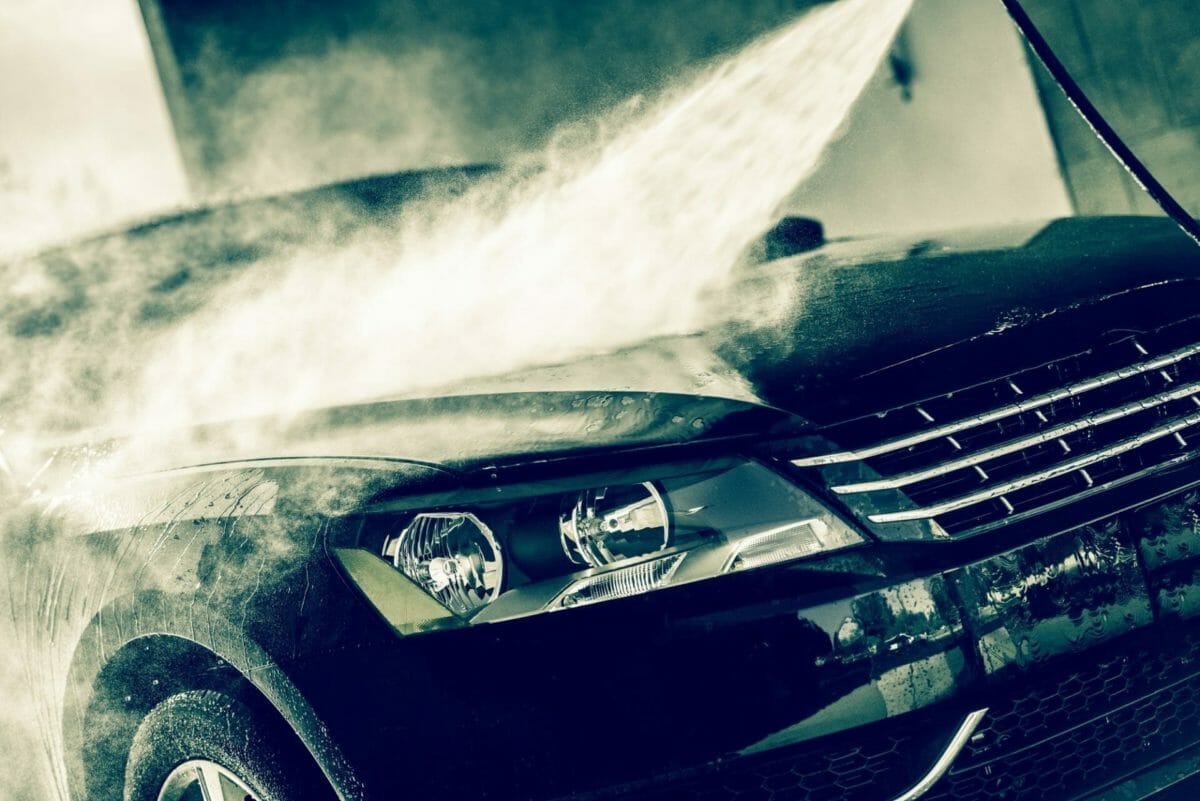
What are the Benefits of a Touchless Car Wash?
Any car wash facility will recommend cleaning your vehicle’s exterior at least once per month to preserve the clear coat, as harmful substances can damage or degrade it when ignored.
However, this equates to a lot of car washes, and unless the establishment cleans the equipment after each use (they don’t), your paint could be exposed to an endless number of possibilities.
One of the main reasons many consider touchless car washes to be better for your car’s paint is that there are no dirty brushes to worry about, effectively removing the chances of finding scratches or swirl marks after a wash.
Another benefit is that touchless car washes are cost-effective. Rather than going out and buying an automotive specialty soap, a wheel cleaner, and an after-wash wax for $30-$80, you just hit “Ultra-Mega-Wash” on the cycle selector for roughly $15.
One example is Southern Cal’s popular LA Express Wash, which charges between $8 for the classic wash-and-rinse to $18 for their top-tier Ceramic Fusion, which tacks on a pre-soak cycle, wheel cleaning, a coat of paint polish, and more.
Additionally, a touchless car wash only takes about 3-5 minutes, a far cry less than the classic hand wash.
Hold on now, don’t run off just yet, as there’s also a list of negatives associated with touchless washes that make them less than “better” for your car.
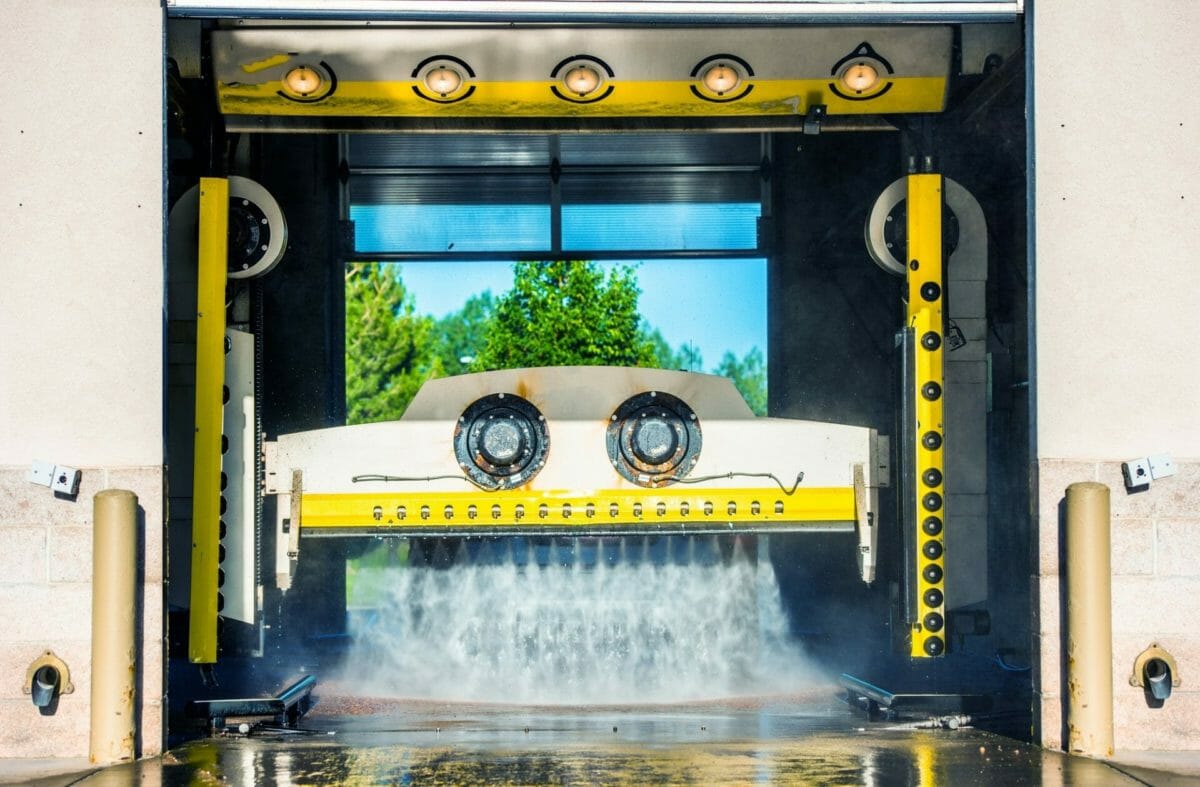
Can a Touchless Wash Harm Your Car?
Without the physical “scrubbing” component, touchless car washes rely on powerful detergents and chemicals to lift dirt from your car’s surface.
However, they can also erode the clear coat, a pigmentless polyethylene paint that typically ranges from 1.5 to 2.0 mils (thousandths of an inch) thick. Its purpose is to protect the paint from things like light scratches, acidic road grime, UV rays, and more.
Without a clear coat, the paint will slowly dull and become patchy, and scratches may rust, all of which can be detrimental to your vehicle’s resale value.
If you do notice this, know that you can likely restore much of the luster through what’s called a Paint Correction. Sadly, this service carries an average price tag of about $1,000, however, if you aren’t a perfectionist there are less costly methods you can do at home.
To combat this, many suggest applying a fresh coat of wax after your monthly laser wash. However, this can potentially cause issues, as frictionless washes aren’t as effective as sponges and brushes.
So, if your vehicle is filthy, there may be grime left behind, and if you apply a coat of wax without first removing it, you run the risk of covering up the harmful substances as well.
Another way a touchless car wash can harm your vehicle is via the high-pressure water jets, which typically spray at between 1,000-2,200 PSI. Not only are they effective at removing light to medium amounts of dirt, but they’re also capable of further damaging paint in areas that may have previously been cracked or chipped.
While there are more ways a touchless car wash can harm your vehicle (like physical contact with the equipment), the possibilities mentioned above are the most common.
Have you changed your mind about touchless washes yet? Don’t worry, as we’ll provide a few tips at the end of this article to help you avoid any damage from your next laser wash.
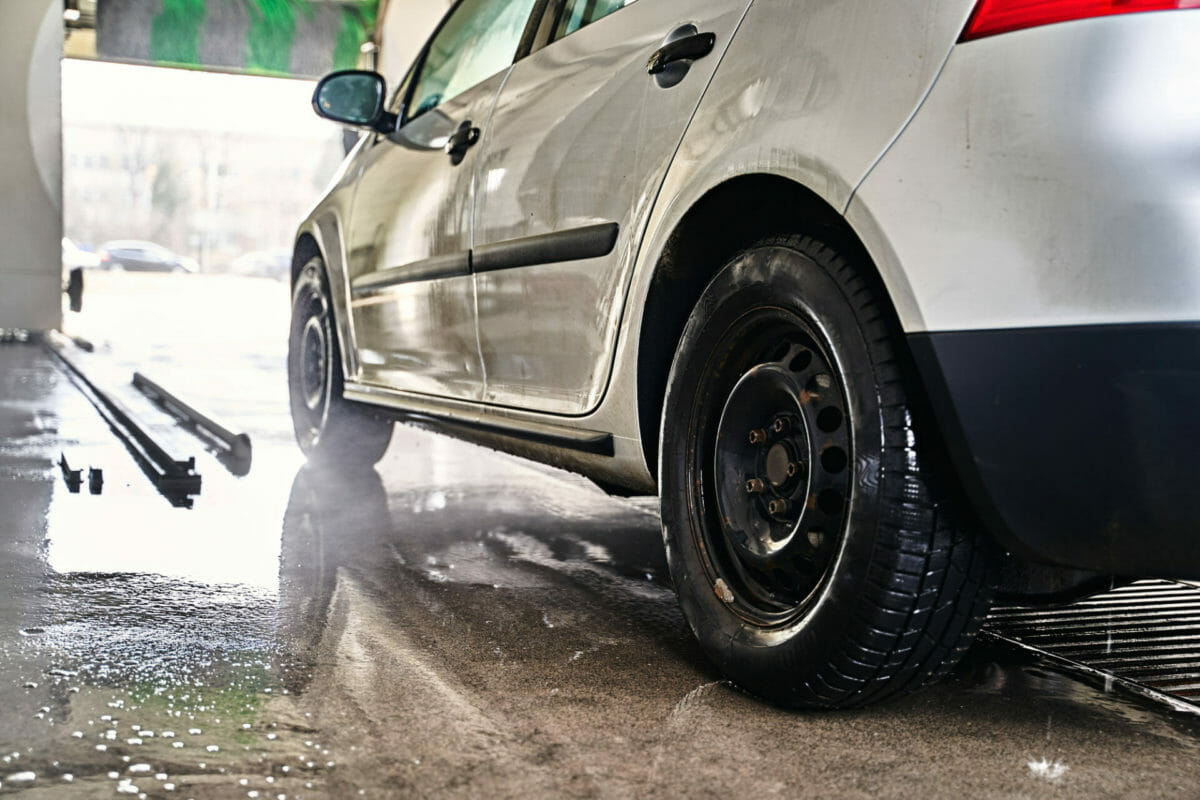
Are Touchless Car Washes Eco-friendly?
One 2018 report by the International Car Wash Association (ICA) shows that the average in-bay automatic car wash uses between 42-44 gallons of water per vehicle, with the most efficient ranging from about 27 to 29. Compare that to the estimated 80- to 150-gallon average of a typical hand-wash, and you’ll likely agree that touchless car washes are eco-friendly.
They accomplish this thanks to their computer-controlled systems that constantly monitor and measure water usage. What’s more, in many systems, used water is then filtered, treated, and re-used before finally being filtered and treated again, and then drained into the sewer system rather than storm drains. This means the environmental impact is essentially zero.
With this in mind, if you do still prefer hand-washing your vehicle, try using organic car wash products instead, as they’re less taxing on Mother Nature. You can also add a shut-off nozzle to the end of your hose to cut back on water usage.
Touchless Car Wash Alternatives
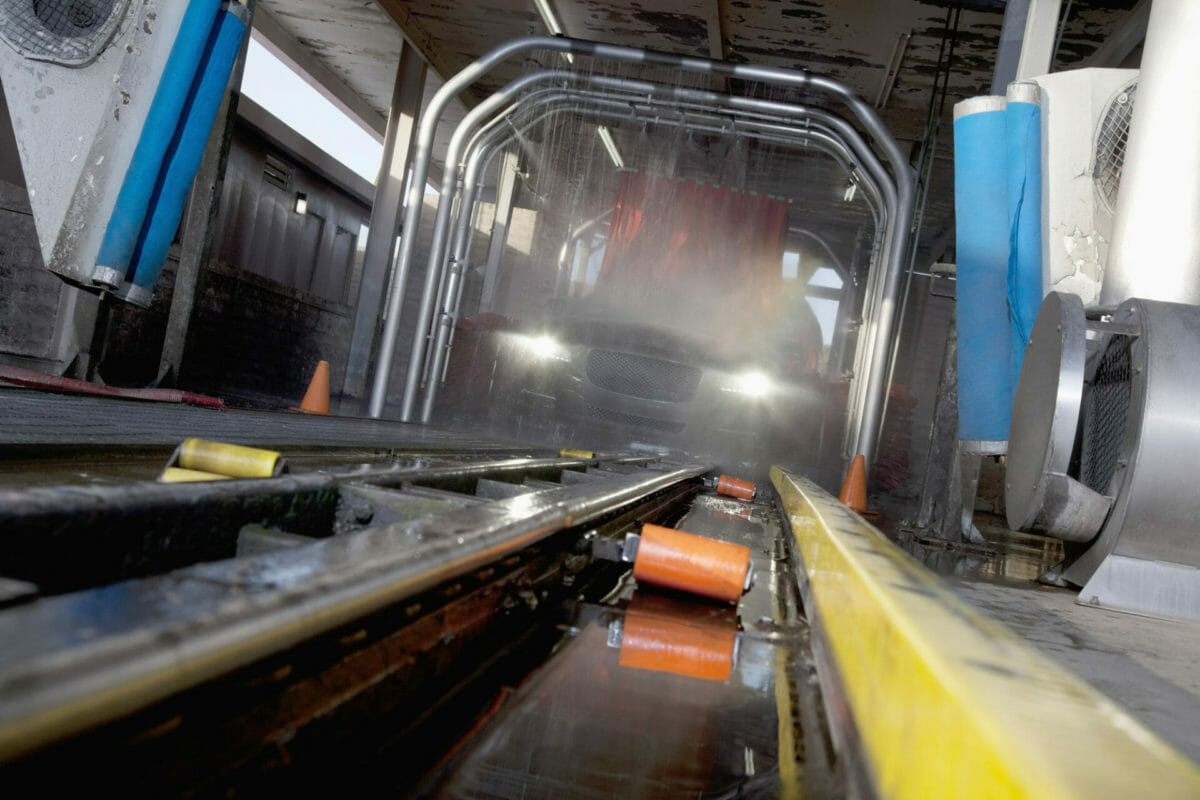
Tunnel Wash
A tunnel wash involves driving your vehicle onto a conveyor belt, putting the transmission in Neutral, and letting it pull you through the wash cycle. Along the way, you’ll encounter spinning bristles, overhead brushes, and high-pressure blowers.
Tunnel washes are less common than touchless variants as they take up more space and are more costly to maintain.
For a closer look at how a tunnel wash works, check out the Science Channels explanation below:
Pros
- Better clean than a touchless wash
- Cost is similar to a mid-tier touchless wash
- All of the dirty work is done for you
Cons
- Ill maintained equipment can cause scratches and swirl marks
- Conveyors have been known to affect alignment or harm drivetrain components
- Aftermarket accessories can easily get ripped off (usually at the car owner’s expense)
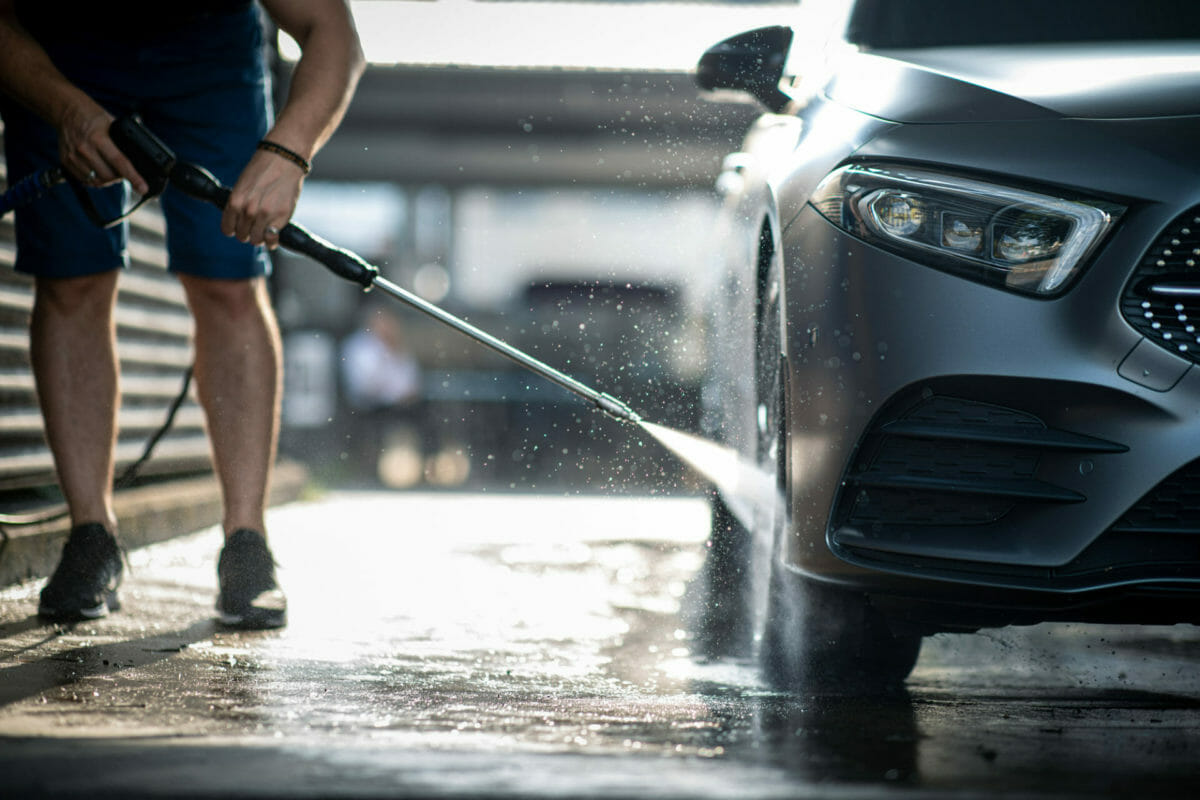
Self-serve Wash
You’ll find self-serve car washes in all shapes and sizes, which provide many of the basics of a full-service wash, but you must do the work yourself. This includes soaping it up, rinsing it off, and drying it.
Pros
- One of the lowest-cost car wash options
- Convenient and widely available
- Often offers interior vacuums as well
Cons
- Dirty brushes and sponges can cause scratches and swirl marks
- Pressure washers can harm your paint if held too close
- Improper rinsing can leave your paint exposed to chemicals longer
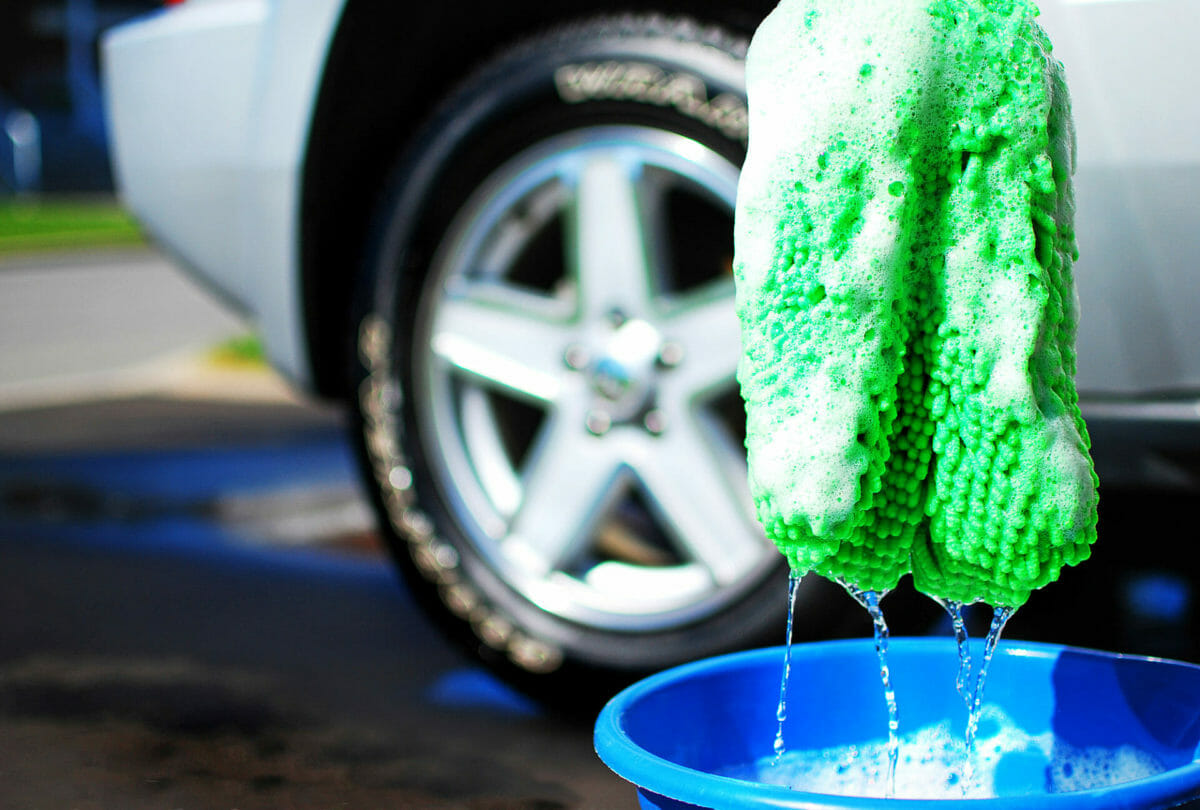
Hand Wash
The hand wash is a tried-and-true method where your success is purely what you make it. If you have the time and don’t mind getting a little wet (or have a mini-me in need of some character-building), there is no better way to wash a car.
If you don’t have much experience with car washing, check out this video from YouTube’s ChrisFix showing how to get the best results.
Pros
- The lowest-priced car wash option over the long-term
- You can personally clean every nook and cranny
- A great excuse to say you “got out and did something”
Cons
- The time investment
- Wet shoes (don’t lie)
- Products cost more upfront but save in the long term
- Products vary greatly in quality, be sure to do your research
Tips to Avoid Damage at a Touchless Car Wash
Research the Best Touchless Car Wash in Your Area
JBS Industries — a leading specialty soap supplier — explains that touchless car wash facilities should choose their products depending on several factors, including, “The physical location of your car wash, the surrounding climate and the contaminants in the area.” If you happen to end up at a car wash that does not take these into account, you could potentially expose your car to the wrong chemicals for your area.
When searching for a quality facility, be sure to call ahead and inquire about which products they use and why. If they don’t know the answer, consider another location, or proceed at your own risk.
Know that not all cleaning products are equal, so it’s good to do a quick Google search to see what others are saying before choosing a car wash facility. Something simple like “touchless car wash near me” should display the resources you’ll want.
Skip the Manual Wipe-down
Many “touchless” car washes still have manual laborers for either pre and/or post-prep. If you’re pulling up to the bay and someone offers a wipe-down, try and see if they grab a fresh soft cloth. Otherwise, ask for one, or kindly decline.
Think Again Before Choosing a Wash Cycle
While some services are beneficial — like undercarriage cleaning and wheel cleaners — others are more-or-less a waste. One such add-on is undercarriage rustproofing. Most vehicles are extensively rustproofed from the factory to protect them from harm, so don’t expect much from a $3-$5 15-second treatment.
Prepare Your Car Ahead of Time
As mentioned earlier, touchless car washes blast at between 1,000-2,200 PSI, which is too much for most aftermarket accessories to handle. Stick-on LED lights and decals? Most likely gone. Antennas, mud flaps, and running boards? Perfectly fine.
Paint Damage? You May Want to Reconsider
If your vehicle already has areas where the paint is cracked or flaking, a touchless car wash can easily make matters worse. What could have been fixable can quickly become something that only a professional body shop can repair.
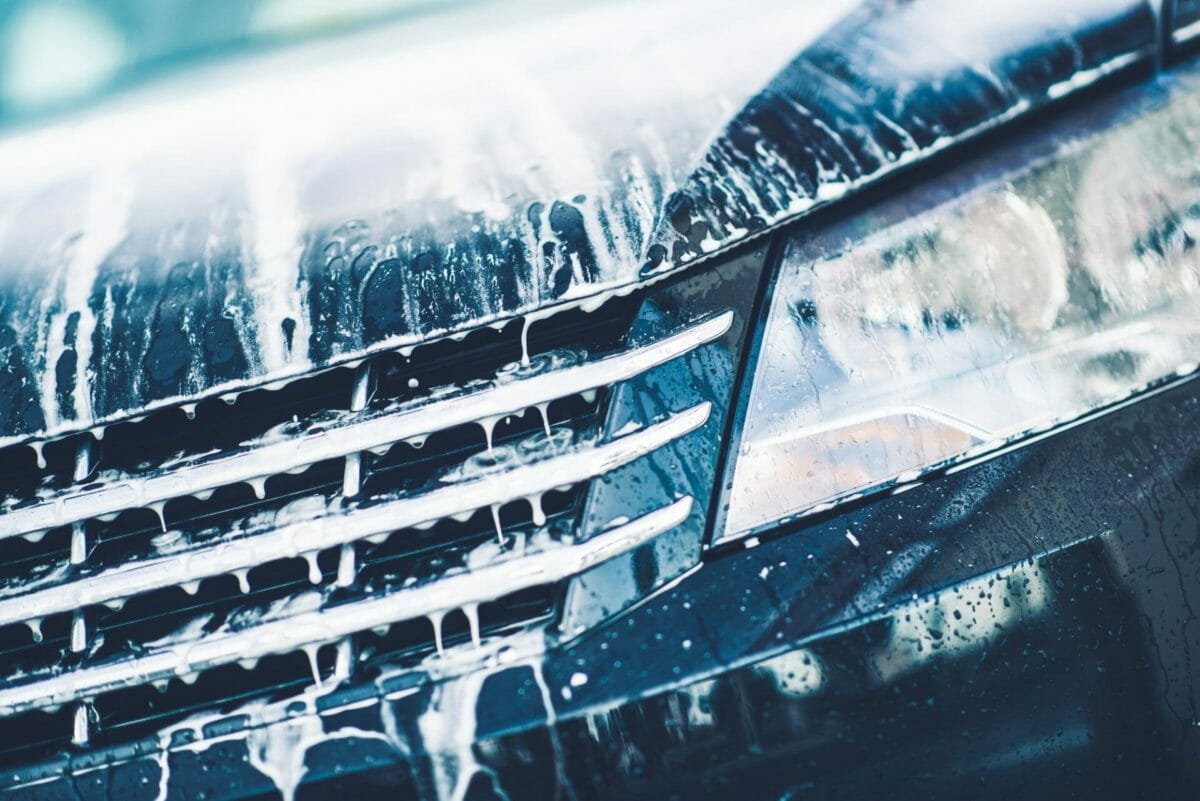
Are Touchless Car Washes Better for Your Car?
The final verdict? No, laser washes aren’t better for your car. However, they aren’t worse either, as all options have their downsides, and touchless washes are a better option than others, like a tunnel wash or a self-serve.
Touch-free car washes are also better for your time, your dry socks, and the environment. Our suggestion is to use touchless car washes as a supplement to the occasional hand-wash or trip to a professional detailer, leaning heavier on the touchless. When you do wipe it down by hand (every three months or so), apply a quality Carnauba wax to help protect the clear coat.
If your car is filthy, think about stopping by a self-serve for a moment just to use the pressure-sprayer, which will make things easier for the laser wash. Regardless, touchless car washes are mostly safe, adequately effective, affordable, and extremely convenient, making them one of the better options for your car.
Photos: Deposit Photos – welcomia, sharpshutter, lightpoet, londondeposit, oleksandrberezko
